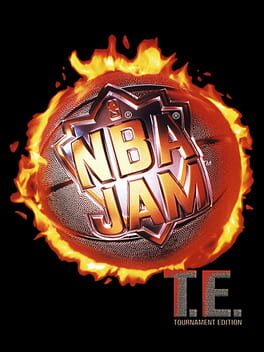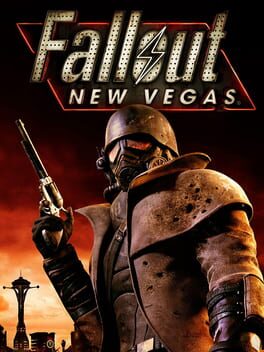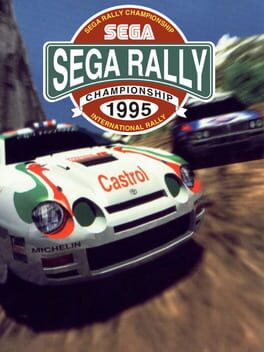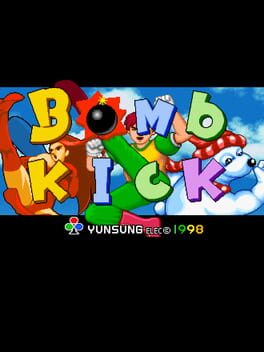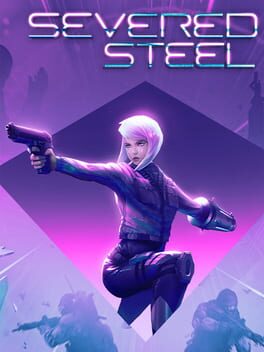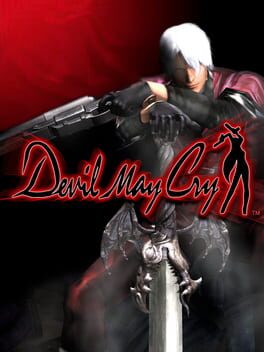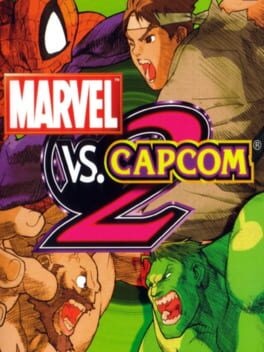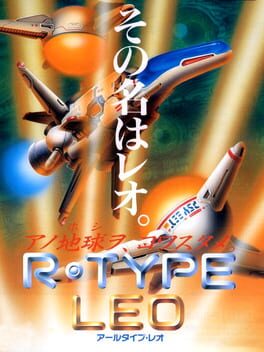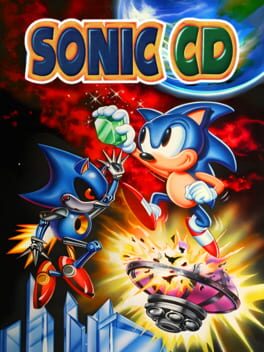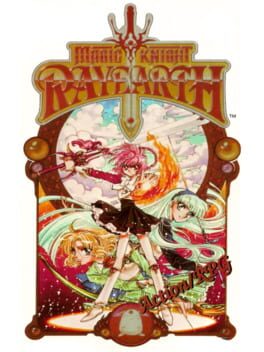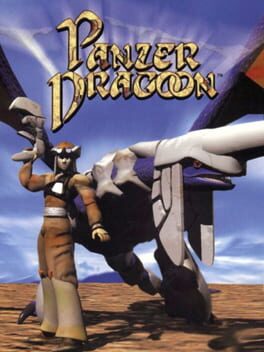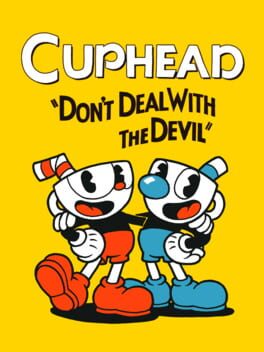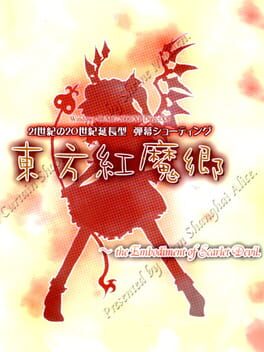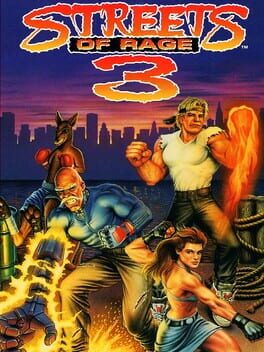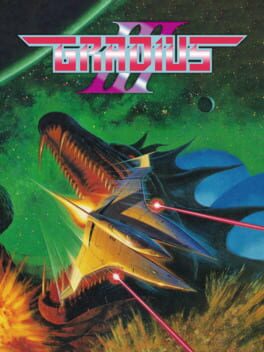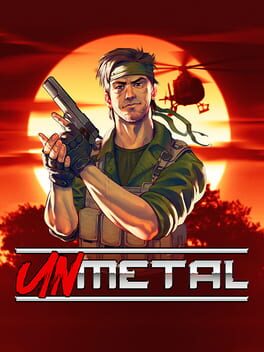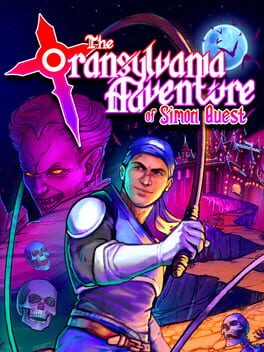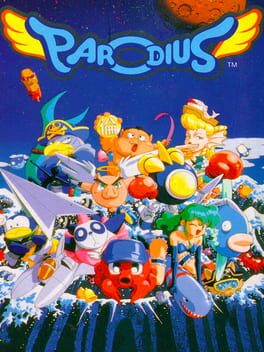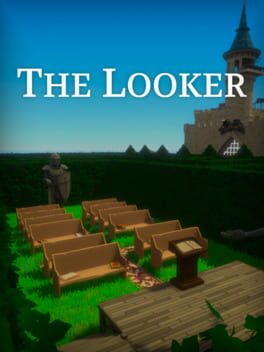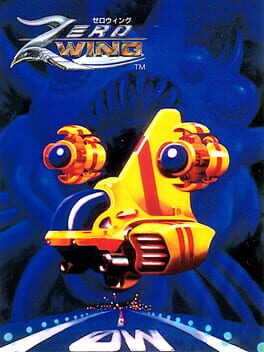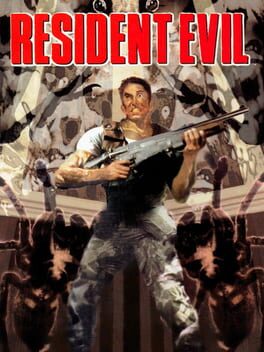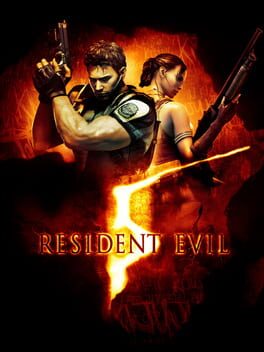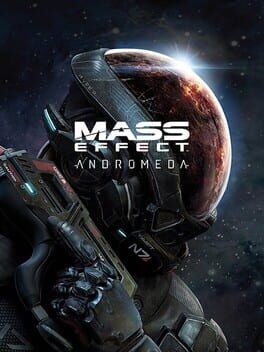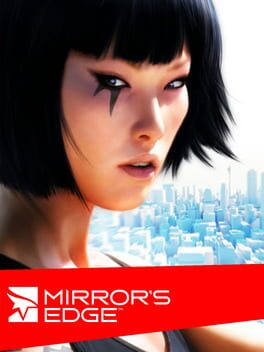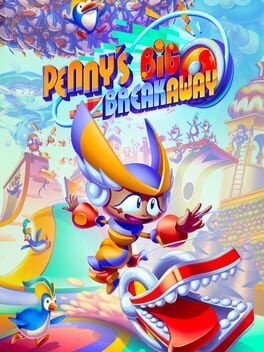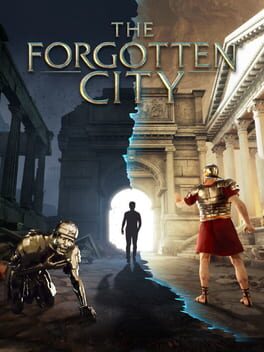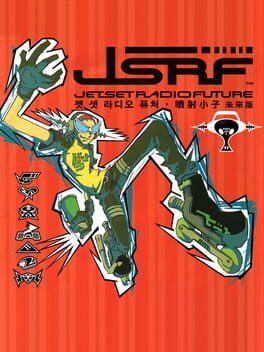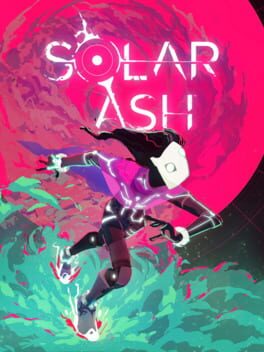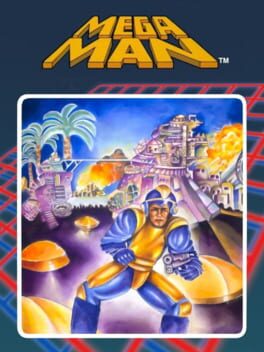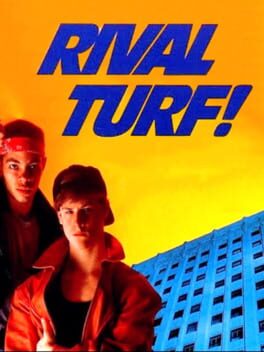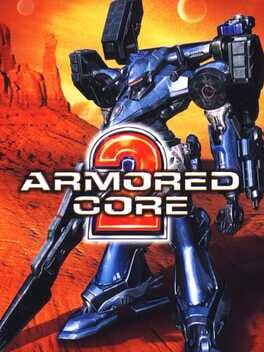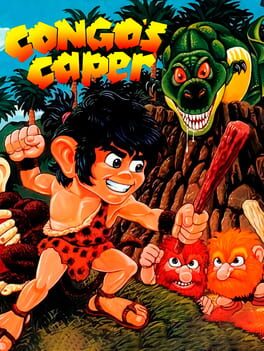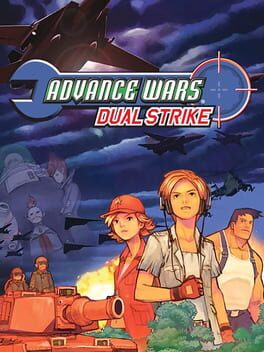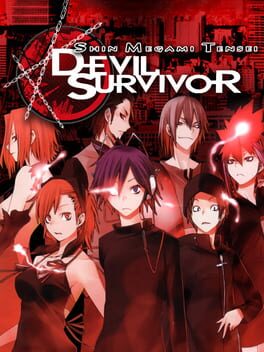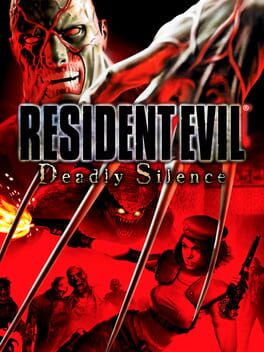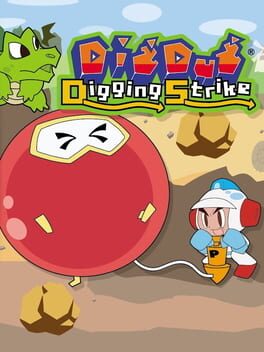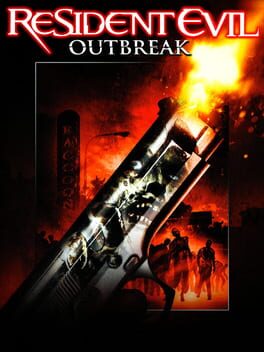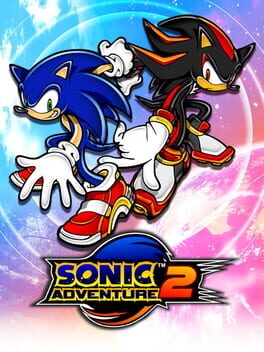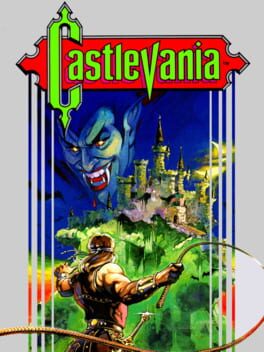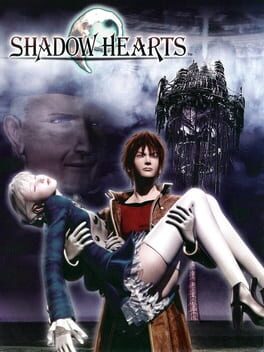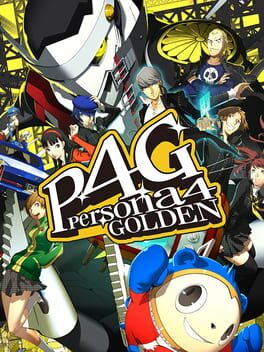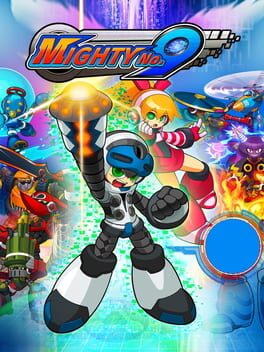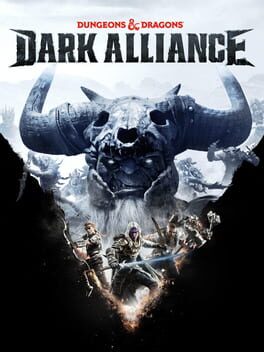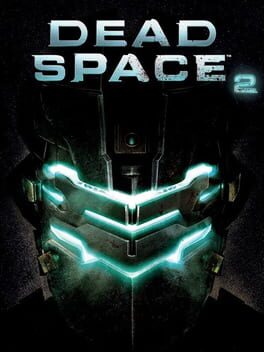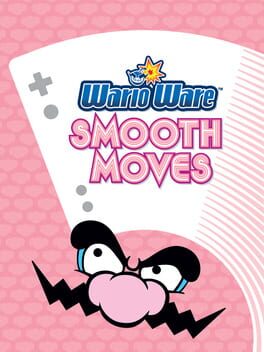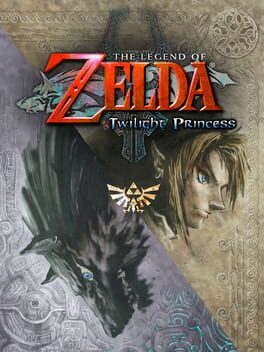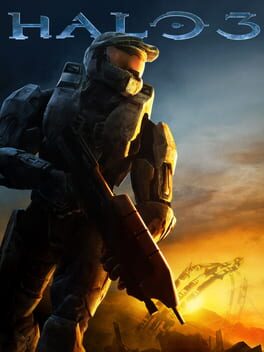HylianBran
BACKER
2251 reviews liked by HylianBran
FightCade
2015
Sonic Superstars
2023
There's been this notion around the Sonic games that if Sega just stopped making stupid decisions, it'd be perfect and we'd all have a great time. You know, I don't buy that. Maybe I'm just a little sick of Sonic.
Despite everything else, the old Mega Drive games are still fairly precious to me, and I have some affection for a half dozen other Sonic titles, but I wasn't as bowled over with Mania as most seemed to be. There wasn't a lot of truly new stuff in it. I just don't know how fertile this formula is. If running around rollercoaster tracks and jumping when necessary is all that captivating, or if it can really be taken to interesting new places without a radical shake-up.
Don't get me wrong, Superstars is pretty crap. They've been understandably keen to promote the physics they've pulled from Sonic Mania, but that doesn't save the poor collision models, the rotten level design or the dogshit mechanics. Even if Sonic runs up hills properly now, it doesn't prevent the game from being tedious as all get out. It just doesn't seem to have been designed with much insight. Sonic Team have included a Fantasy Zone level in here, solely because they didn't get the joke when they saw Mania's Mean Bean Machine boss. I struggle to recall any moments where I had fun. Mostly, I remember the shock when I saw they thought to bring back the bouncy floor from Sonic CD's Wacky Workbench.
Oh, and everybody's already talked about it, but those bosses are truly appalling. I couldn't bring myself to replay a single level, knowing one of those were at the end of it.
There's pockets of positivity in the project. Basically all aesthetic. The character models are generally pretty nice, but their limited animation makes them look like they were extracted from a better game and dumped onto a Steam community page. Sonic Mania/Shredder's Revenge boy, Tee Lopes, has composed a few typically great tracks, and they stand out alarmingly in among the synthesised dredge from Sonic Team. The 2D animation sequences are nice too, as is typical of all the post-Mania stuff, and like those, they're let down by lacklustre music.
At its best, it's a halfhearted retread. It's attempting to mine nostalgia from a source that's been tapped out relentlessly for decades. Bold, youthful confidence used to be Sega's whole thing. They'd speed into new potential anywhere they saw it, and all their most beloved projects carried a sense of boundless energy. Now, they're sitting in the paddling pool, trying to make Samba de Amigo a thing again, and too scared to do a Yakuza game without Kazuma Kiryu.
I wasn't even excited for this, and I'm still bitterly disappointed. They've really fucked this one up, and if you bought it on launch day, you might have paid £55 for it. I can't recall the last time I've been this upset with a new game, and I'm in the middle of playing Flashback 2 right now.
Despite everything else, the old Mega Drive games are still fairly precious to me, and I have some affection for a half dozen other Sonic titles, but I wasn't as bowled over with Mania as most seemed to be. There wasn't a lot of truly new stuff in it. I just don't know how fertile this formula is. If running around rollercoaster tracks and jumping when necessary is all that captivating, or if it can really be taken to interesting new places without a radical shake-up.
Don't get me wrong, Superstars is pretty crap. They've been understandably keen to promote the physics they've pulled from Sonic Mania, but that doesn't save the poor collision models, the rotten level design or the dogshit mechanics. Even if Sonic runs up hills properly now, it doesn't prevent the game from being tedious as all get out. It just doesn't seem to have been designed with much insight. Sonic Team have included a Fantasy Zone level in here, solely because they didn't get the joke when they saw Mania's Mean Bean Machine boss. I struggle to recall any moments where I had fun. Mostly, I remember the shock when I saw they thought to bring back the bouncy floor from Sonic CD's Wacky Workbench.
Oh, and everybody's already talked about it, but those bosses are truly appalling. I couldn't bring myself to replay a single level, knowing one of those were at the end of it.
There's pockets of positivity in the project. Basically all aesthetic. The character models are generally pretty nice, but their limited animation makes them look like they were extracted from a better game and dumped onto a Steam community page. Sonic Mania/Shredder's Revenge boy, Tee Lopes, has composed a few typically great tracks, and they stand out alarmingly in among the synthesised dredge from Sonic Team. The 2D animation sequences are nice too, as is typical of all the post-Mania stuff, and like those, they're let down by lacklustre music.
At its best, it's a halfhearted retread. It's attempting to mine nostalgia from a source that's been tapped out relentlessly for decades. Bold, youthful confidence used to be Sega's whole thing. They'd speed into new potential anywhere they saw it, and all their most beloved projects carried a sense of boundless energy. Now, they're sitting in the paddling pool, trying to make Samba de Amigo a thing again, and too scared to do a Yakuza game without Kazuma Kiryu.
I wasn't even excited for this, and I'm still bitterly disappointed. They've really fucked this one up, and if you bought it on launch day, you might have paid £55 for it. I can't recall the last time I've been this upset with a new game, and I'm in the middle of playing Flashback 2 right now.
Fallout: New Vegas
2010
Fatherhood. It's the crux of the joke of this account, it's the glue holding together all the insanity and violence that the character of YourDadReviews portrayed through all of the reviews up until this point. While I'm sure there are many games that probably have better examples of fatherhood, I think Fallout New Vegas has ultimately become like the father I never had. Even to this point this game is always teaching me new ways to experience the journey, and on that journey we see a variety of fathers. Some are good, love their kids or are at the very least supportive of them, some aren't... I think the closest to YourDadReviews is Papa Khan, who is the patriarch of an entire clan of wastelanders. Much like Papa Khan, the character of YourDadReviews is haunted by his past. A past full of death, sexual gratification, drugs, and many other things. It was fun defining that past, making reviews and trying to tie it to the themes of YourDadReviews, but much like Papa Khan I wind up kind of stuck in a way.
I wanted to end YDR with a bang, something badass to wrap up the insane narrative I was weaving in my mind... but the more I think about it, the less I think such a character deserves such an ending. So, much like I do with Papa Khan in an NCR playthrough, I will silently kill YourDadReviews with this final review.
Thank you everyone for your love and support of YourDadReviews. Stay frosty.
P.S. The only April Fools joke here is that none of it is a joke.
I wanted to end YDR with a bang, something badass to wrap up the insane narrative I was weaving in my mind... but the more I think about it, the less I think such a character deserves such an ending. So, much like I do with Papa Khan in an NCR playthrough, I will silently kill YourDadReviews with this final review.
Thank you everyone for your love and support of YourDadReviews. Stay frosty.
P.S. The only April Fools joke here is that none of it is a joke.
Kenji Sasaki, the director of Sega Rally at one point in development worked so much on the project that he began questioning the very thought of finding driving "fun".
As a minnow you'll barely know how to drive a go-kart in Super Mario Kart, in comparison a fine-tuned high performance Toyota Celica GT-Four is well above your pay grade. You will start racing in the beginner-friendly Desert course just fine and dandy, until you try to make the very long easy right near the end and see yourself smacking head-first into the stone wall, sometimes even finding your curious eyes getting distracted by the zebras standing nearby. The Forest with it's pine trees welcome you to a hairpin turn that you have no hope of knowing how to handle in your weighty polygonal real world vehicle, and you barely find yourself making it to the end out of sheer luck. Then the apparent finale rears it's ugly head, an insurmountable Mountain with not only it's own hairpin turn, but many tricky curves, a long narrow turn leaving little room for error, and precise maneuvering through town. This is the end for you, this mountain cannot be conquered. You're left to zero knowledge of the hellish Lake Side extra course that lies beyond that mountain, home to narrow precision-demanding turns and chicanes that only true experts of the dirt may discover and have any hope of navigating.
You become enamored over how mean the mountain is, and find it's song mesmerizing through it's triumphant guitar riffs that feel like it's cheering you on. You're but a kid, but you try your best to figure out the science of operating a championship-grade motor vehicle. You only learn so much, even if you do get a bit better at the other portions of the track, a hairpin turn is still essentially a guaranteed crash. Despite an obvious skill plateau for your moronic self, you still find the game fun to play and come back to it just to hear it's cheery demeanor root for you. You've game over'd so many times, but it never feels bad, because the game only wishes to entertain and not belittle.
As an adult you come back to the same game with fondness, puzzled as to why you took so much leisure just driving by yourself in time attack. Was it really just the music? Was the Celica GT-Four just that cool of a car? You come back to the same course and struggle as you normally do, albeit this time with knowledge of how to decelerate and utilize the brake properly. You hug the inside of those corners, you get the drift around the hairpin without touching the embankment, and not a single wall is run into as you make the quick descend through town. That "cool part" of the music that you really liked is now suddenly the victory jubilee as you approach the finish line on the third and final lap. Addiction to the feel of the road sets in, and you find yourself beating the arcade mode and getting the esteemed honor to officially drive on the Lake Side course without the need of that code you found one time on your dad's shitty internet. The Stratos car also becomes yours, best of luck driver, you are now a true master and may access these dangerous assets at any time. You deserve it truly.
It's at this point we come back to Sasaki, who had taken a moment to drive his own car around the mountains to find his spark again to make good-ass driving games, he found the experience so exciting that he based the Mountain track on it and made the very same course that I loved and still do to this day. To transfer that experience to a video game and have it somehow resonate with a six-year old who is now a full grown adult that can handle that hairpin turn with relative ease is a true mark of brilliance, and why Sega Rally stands on it's own as the foundation of all rally racing games and possibly one of my favorite driving games ever made.
Hurrah to you Mr. Sasaki.
As a minnow you'll barely know how to drive a go-kart in Super Mario Kart, in comparison a fine-tuned high performance Toyota Celica GT-Four is well above your pay grade. You will start racing in the beginner-friendly Desert course just fine and dandy, until you try to make the very long easy right near the end and see yourself smacking head-first into the stone wall, sometimes even finding your curious eyes getting distracted by the zebras standing nearby. The Forest with it's pine trees welcome you to a hairpin turn that you have no hope of knowing how to handle in your weighty polygonal real world vehicle, and you barely find yourself making it to the end out of sheer luck. Then the apparent finale rears it's ugly head, an insurmountable Mountain with not only it's own hairpin turn, but many tricky curves, a long narrow turn leaving little room for error, and precise maneuvering through town. This is the end for you, this mountain cannot be conquered. You're left to zero knowledge of the hellish Lake Side extra course that lies beyond that mountain, home to narrow precision-demanding turns and chicanes that only true experts of the dirt may discover and have any hope of navigating.
You become enamored over how mean the mountain is, and find it's song mesmerizing through it's triumphant guitar riffs that feel like it's cheering you on. You're but a kid, but you try your best to figure out the science of operating a championship-grade motor vehicle. You only learn so much, even if you do get a bit better at the other portions of the track, a hairpin turn is still essentially a guaranteed crash. Despite an obvious skill plateau for your moronic self, you still find the game fun to play and come back to it just to hear it's cheery demeanor root for you. You've game over'd so many times, but it never feels bad, because the game only wishes to entertain and not belittle.
As an adult you come back to the same game with fondness, puzzled as to why you took so much leisure just driving by yourself in time attack. Was it really just the music? Was the Celica GT-Four just that cool of a car? You come back to the same course and struggle as you normally do, albeit this time with knowledge of how to decelerate and utilize the brake properly. You hug the inside of those corners, you get the drift around the hairpin without touching the embankment, and not a single wall is run into as you make the quick descend through town. That "cool part" of the music that you really liked is now suddenly the victory jubilee as you approach the finish line on the third and final lap. Addiction to the feel of the road sets in, and you find yourself beating the arcade mode and getting the esteemed honor to officially drive on the Lake Side course without the need of that code you found one time on your dad's shitty internet. The Stratos car also becomes yours, best of luck driver, you are now a true master and may access these dangerous assets at any time. You deserve it truly.
It's at this point we come back to Sasaki, who had taken a moment to drive his own car around the mountains to find his spark again to make good-ass driving games, he found the experience so exciting that he based the Mountain track on it and made the very same course that I loved and still do to this day. To transfer that experience to a video game and have it somehow resonate with a six-year old who is now a full grown adult that can handle that hairpin turn with relative ease is a true mark of brilliance, and why Sega Rally stands on it's own as the foundation of all rally racing games and possibly one of my favorite driving games ever made.
Hurrah to you Mr. Sasaki.
Bomb Kick
1998
Bomb Kick
1998
Severed Steel
2021
There's not a ton of complexity as to how Severed Steel operates and some elements need fine-tuning, but I can't help but appreciate how much the game accomplishes with surprisingly little. I'm a fan of the simple and effective UI; your aiming reticle is surrounded by two bars that convey how much ammo and slo-mo time is left (so these gauges are always near the center of attention) and the flashing light on your gun also changes color (from light neon colors to yellow to red) so you're constantly keyed in on when you'll need to pick up a gun early or engage/disengage when running low on supplies. Enemies stand out from the environment thanks to the cel-shaded enemy outlines, and upon death emit a distinct explosion sound-effect so there's no ambiguity when quickly rifling through targets during firefights or when picking off enemies from afar. Guns feel great to aim and fire in slow-mo, mainly because there's very noticeable recoil when firing in real-time; the contrast really helps sell the necessity of the feature. I also love Severed Steel's kick as both a form of attack and traversal; the obvious purpose is your primary melee attack while holding a gun if you don't want to expend your limited magazine to finish off an enemy as well as kicking open doors, but it can also be used to quickly ascend up walls or kick off of grounded/aerial enemies if your double jump isn't enough. The same goes for the arm cannon; you can fire holes into any surface if you don't feel like hunting down stairs/doorways for objectives, but it also provides a nice desperation option to instantly eliminate shielded enemies or drop heavy grunts down to another floor if you find yourself without a weapon.
Despite the appealing core gameplay, Severed Steel can often feel a bit repetitive. Enemy variety feels lacking since the player is usually approaching enemies in a similar manner (that is, entering slo-mo while using stunts to efficiently dispatch foes while firing into their heads/backsides), and I would have liked to see enemies that had to be specifically eliminated using the arm cannon or melee as mix-ups. The Rogue Steel mode does touch upon this with random enemy buffs that force such approaches, but at times I feel like this mode prefers to lengthen combat by overwhelming the player with excess enemies with more health. I do think the game could have also leaned a bit more into its parkour elements with additional stages that focused upon traversal and dodging/quickly disposing of enemies, as there were only a couple of timed story missions that necessitated a rush to the end. Finally, I have to agree with HotPocketHPE that the slo-mo gauge is unbalanced; you'll practically never run out of bullet time as long as you're staying in stunt mode (super easy since there are floors and walls aplenty to slide and wallrun), though this is again addressed from playing Rogue Steel via the "Rebalanced Bullet-Time" unlockable modifier. Even with these gripes however, Severed Steel is a pretty easy recommendation considering how content-rich the game is from its many different modes and extra campaign/workshop levels to tinker with. It was an absolute steal at 80% off on the Steam Spring Sale, and I can't wait to see how Greylock Studio iterates and improves upon their already fantastic formula.
Despite the appealing core gameplay, Severed Steel can often feel a bit repetitive. Enemy variety feels lacking since the player is usually approaching enemies in a similar manner (that is, entering slo-mo while using stunts to efficiently dispatch foes while firing into their heads/backsides), and I would have liked to see enemies that had to be specifically eliminated using the arm cannon or melee as mix-ups. The Rogue Steel mode does touch upon this with random enemy buffs that force such approaches, but at times I feel like this mode prefers to lengthen combat by overwhelming the player with excess enemies with more health. I do think the game could have also leaned a bit more into its parkour elements with additional stages that focused upon traversal and dodging/quickly disposing of enemies, as there were only a couple of timed story missions that necessitated a rush to the end. Finally, I have to agree with HotPocketHPE that the slo-mo gauge is unbalanced; you'll practically never run out of bullet time as long as you're staying in stunt mode (super easy since there are floors and walls aplenty to slide and wallrun), though this is again addressed from playing Rogue Steel via the "Rebalanced Bullet-Time" unlockable modifier. Even with these gripes however, Severed Steel is a pretty easy recommendation considering how content-rich the game is from its many different modes and extra campaign/workshop levels to tinker with. It was an absolute steal at 80% off on the Steam Spring Sale, and I can't wait to see how Greylock Studio iterates and improves upon their already fantastic formula.
Devil May Cry
2001
"Devil May Cry's a Rockin, don't come a knockin baby yeah!"
So for a long time this was my favourite game ever and was the start of my solidification into a hardcore Capcom fan which has continued to this day. When this came out I was around 18 and a friend had bought it. We played it together and seeing a leather clad biker girl smash through a bar, a gothic castle and uppercutting a marionette with a sword then juggling it with dual wielding pistols was, at the time, the coolest thing ever. I knew this game inside and out speed running it, learning every move, or collecting over a million red orbs because I could. One weekend when I had the house to myself that same friend came and stayed over playing all night by setting up two PlayStation 2's next to two TVs so we could both play Devil May Cry on our own saves hunting S ranks until we had every one on every difficulty level including Dante Must Die. I loved it.
The thing is I'd never played a game like this before. It's roots starting as Resident Evil 4 before changing into it's own series are pretty evident in aspects of it's design. The gothic horror atmosphere slightly underlining it's occasionally camp and over the top exterior gelled for an extremely unique experience. I've seen a lot of reviews on here being pretty negative about it and you know what? I get it, I do. The static camera angle and controls built around it for people who having not played it during that era wouldn't care for or have the patience to learn would feel dated. The thing is though, the game is built around it fundamentally when you learn how to use it on it's terms. Enemies even off screen give audio attack cues, the controls are built around directions and angles in relation to the camera but are also designed for angle changes when you know how. It's a clever game for it's time and the mixture of basic exploration, puzzles and scattered battle arenas was just a fun mix as the game understands the importance of downtime.
It's also an impressive looking and sounding game. Remember this came out only a year after the PS2 launch and has these large levels, detailed character and enemy models and insane boss fights in which each feels like a real event to behold. I love the enemy designs such as shadow cats that launch spikes, incorporeal grim reapers and giant lava spiders. Though the boss fights do repeat they are such big spectacles and some of the hardest challenges in the game with some insane music. Speaking of which whilst the later soundtracks went a lot more metal with vocal tracks the original game has this mixture of gothic haunting melodies that could easily be in a horror game to sort of electronic rock tracks and just stands out a lot more from it's later sequels due to it.
Coming back to this in 2012 for the remaster and all the trophies then playing it again now and I still love it. Yes it's terribly cheesy with laughable lip synching, yes it's fixed camera can make the action feel unwieldly and yes it's probably one of those games you had to be there for....
....but it's the best Devil May Cry game though.
+ Horror and action roots mixed.
+ Combat and boss battles are exciting.
+ Great music and visuals.
+ Sometimes funny, sometimes intentionally.
- Fixed camera angle can take getting used to.
So for a long time this was my favourite game ever and was the start of my solidification into a hardcore Capcom fan which has continued to this day. When this came out I was around 18 and a friend had bought it. We played it together and seeing a leather clad biker girl smash through a bar, a gothic castle and uppercutting a marionette with a sword then juggling it with dual wielding pistols was, at the time, the coolest thing ever. I knew this game inside and out speed running it, learning every move, or collecting over a million red orbs because I could. One weekend when I had the house to myself that same friend came and stayed over playing all night by setting up two PlayStation 2's next to two TVs so we could both play Devil May Cry on our own saves hunting S ranks until we had every one on every difficulty level including Dante Must Die. I loved it.
The thing is I'd never played a game like this before. It's roots starting as Resident Evil 4 before changing into it's own series are pretty evident in aspects of it's design. The gothic horror atmosphere slightly underlining it's occasionally camp and over the top exterior gelled for an extremely unique experience. I've seen a lot of reviews on here being pretty negative about it and you know what? I get it, I do. The static camera angle and controls built around it for people who having not played it during that era wouldn't care for or have the patience to learn would feel dated. The thing is though, the game is built around it fundamentally when you learn how to use it on it's terms. Enemies even off screen give audio attack cues, the controls are built around directions and angles in relation to the camera but are also designed for angle changes when you know how. It's a clever game for it's time and the mixture of basic exploration, puzzles and scattered battle arenas was just a fun mix as the game understands the importance of downtime.
It's also an impressive looking and sounding game. Remember this came out only a year after the PS2 launch and has these large levels, detailed character and enemy models and insane boss fights in which each feels like a real event to behold. I love the enemy designs such as shadow cats that launch spikes, incorporeal grim reapers and giant lava spiders. Though the boss fights do repeat they are such big spectacles and some of the hardest challenges in the game with some insane music. Speaking of which whilst the later soundtracks went a lot more metal with vocal tracks the original game has this mixture of gothic haunting melodies that could easily be in a horror game to sort of electronic rock tracks and just stands out a lot more from it's later sequels due to it.
Coming back to this in 2012 for the remaster and all the trophies then playing it again now and I still love it. Yes it's terribly cheesy with laughable lip synching, yes it's fixed camera can make the action feel unwieldly and yes it's probably one of those games you had to be there for....
....but it's the best Devil May Cry game though.
+ Horror and action roots mixed.
+ Combat and boss battles are exciting.
+ Great music and visuals.
+ Sometimes funny, sometimes intentionally.
- Fixed camera angle can take getting used to.
I always feel like an odd man out when I say I didn't like this game as much as everyone else did. It feels like "Asset Reuse The Game" to me, like it's only one step above Capcom Fighting Evolution/Jam in that regard which is a half-step above MUGEN.
So many character animations are cut down from their original appearances with Sentinel being the most obvious, the stages are soul-less 2.5D constructs of the game designers' minds and the music is nonsensical jazz music with zero bearing on anything going on in the game. I miss the awesome music from Marvel Super Heroes and MvC1, oh well here's an annoying eight second loop on the character select that features exactly one line of lyrics though.
Also, what's up with some of the new Capcom characters being original characters? Whom we never hear from again? RIP Amingo and Ruby Heart fans I guess, if there are any.
So many character animations are cut down from their original appearances with Sentinel being the most obvious, the stages are soul-less 2.5D constructs of the game designers' minds and the music is nonsensical jazz music with zero bearing on anything going on in the game. I miss the awesome music from Marvel Super Heroes and MvC1, oh well here's an annoying eight second loop on the character select that features exactly one line of lyrics though.
Also, what's up with some of the new Capcom characters being original characters? Whom we never hear from again? RIP Amingo and Ruby Heart fans I guess, if there are any.
233 lists liked by HylianBran
by Vee |
24 Games
by Retro |
33 Games
by FallenGrace |
22 Games
by FallenGrace |
29 Games
by Drax |
20 Games
by Ptcremisi |
26 Games
by 87th |
25 Games
by FallenGrace |
30 Games
by FallenGrace |
12 Games


